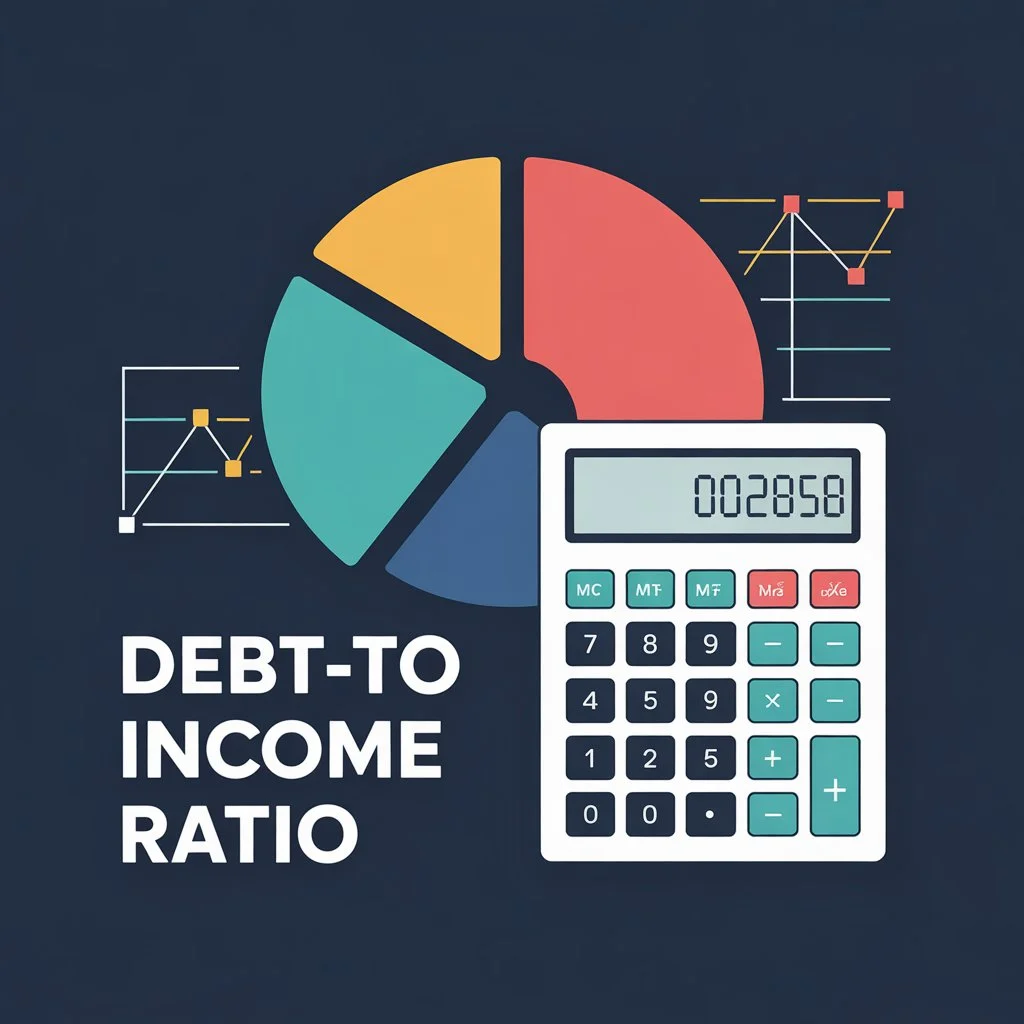Debt-to-Income Ratio Calculator
Ready to find your DTI? Use our quick and free tool below:
Incomes (Before Tax)
| Salary & Earned Income | / Year | |
| Pension & Social Security | / Year | |
| Investment & Savings | / Year | |
| Other Income | / Year |
Debts / Expenses
| Rental Cost | / Month | |
| Credit Cards | / Month | |
| Auto Loan | / Month |
Your Debt-to-Income Ratio
0%
Enter your monthly income and debts, and get instant results!
Understanding Your Debt-to-Income Ratio
Monthly Income
- Salary: $5,000
- Investments: $200
- Other: $300
Monthly Debt
- Rent: $1,200
- Credit Cards: $200
- Auto Loan: $250
What Your DTI Means:
Why DTI Ratio Matters
Lenders, banks, and mortgage companies heavily rely on your DTI ratio to judge whether you can handle a new loan responsibly.
A high DTI might signal risk, while a lower DTI implies that you have good control over your finances. For example:
Mortgage lenders often want DTI below 43%
Personal loans may get approved if DTI is under 36%
If you’re planning to buy a home, apply for a loan, or consolidate debts, your DTI will come into play.
According to the Consumer Financial Protection Bureau, DTI is a key metric used in mortgage underwriting.

What is Debt-to-Income Ratio (DTI)?
Your Debt-to-Income (DTI) ratio is a simple calculation that shows how much of your monthly income goes toward paying off debts. It helps lenders assess your ability to repay loans.
There are two types:
Front-end DTI: Housing-related expenses only (like mortgage or rent)
Back-end DTI: All recurring debts, including credit cards, car loans, student loans, etc.
Understanding your DTI is the first step to financial clarity.
Why DTI Ratio Matters
Lenders, banks, and mortgage companies heavily rely on your DTI ratio to judge whether you can handle a new loan responsibly.
A high DTI might signal risk, while a lower DTI implies that you have good control over your finances. For example:
Mortgage lenders often want DTI below 43%
Personal loans may get approved if DTI is under 36%
If you’re planning to buy a home, apply for a loan, or consolidate debts, your DTI will come into play.
According to the Consumer Financial Protection Bureau, DTI is a key metric used in mortgage underwriting.
How to Calculate Debt-to-Income Ratio (Formula)
The formula is simple:
DTI = (Total Monthly Debt Payments / Gross Monthly Income) × 100
Example:
Monthly Debt Payments: $1,500
Gross Income: $5,000
DTI = ($1,500 / $5,000) × 100 = 30%
That means 30% of your income is going toward debt.
DTI Ratio Example (Step-by-Step)
Let’s meet John:
Monthly Income: $6,000
Debts:
Mortgage: $1,200
Car Loan: $300
Credit Card: $250
Step-by-step DTI Calculation:
Total Debt = $1,200 + $300 + $250 = $1,750
DTI = ($1,750 / $6,000) × 100 = 29.2%
John has a healthy DTI and can likely qualify for most loans.
What is a Good Debt-to-Income Ratio?
Here’s a breakdown:
| DTI Range | Meaning |
|---|---|
| 0% – 20% | Excellent |
| 21% – 35% | Good (Most loan types allowed) |
| 36% – 43% | Fair (May affect eligibility) |
| 44% and above | Risky (Loan approval is harder) |
Aim for a DTI under 36% to stay financially healthy.
Learn more in our guide: What is a Good Debt-to-Income Ratio

DTI Ratio for Mortgage, Auto Loans, and Personal Loans
Mortgage Loans
Ideal DTI: Below 43%
Conventional loans may allow up to 50% with strong credit
Auto Loans
Preferred DTI: Under 36%
Lenders also consider your credit utilization
Personal Loans
Better approval odds with DTI below 30%
Combine with low credit card usage for stronger profiles
More info: DTI Ratio for Loans Guide
How to Improve Your Debt-to-Income Ratio
Here are proven strategies:
✅ Increase your monthly income (side jobs, raises)
✅ Pay down high-interest debts first
✅ Avoid taking new loans temporarily
✅ Refinance existing loans
Use our full checklist here: DTI Improvement Guide
Frequently Asked Questions (FAQ)
Q1. Does rent count toward my DTI ratio?
Yes, especially for front-end DTI.
Q2. Can I still get a loan with a high DTI?
Possibly, but rates and terms may be less favorable.
Q3. How often should I check my DTI?
Every 3–6 months or before applying for any major loan.
Q4. Is DTI the same as credit score?
No, but both impact your loan eligibility.
More: Debt-to-Income FAQs
